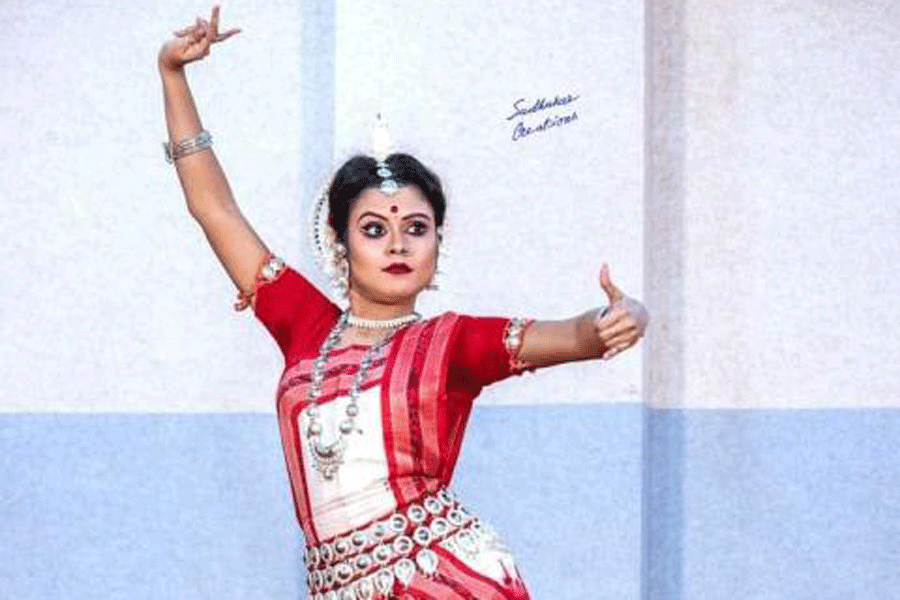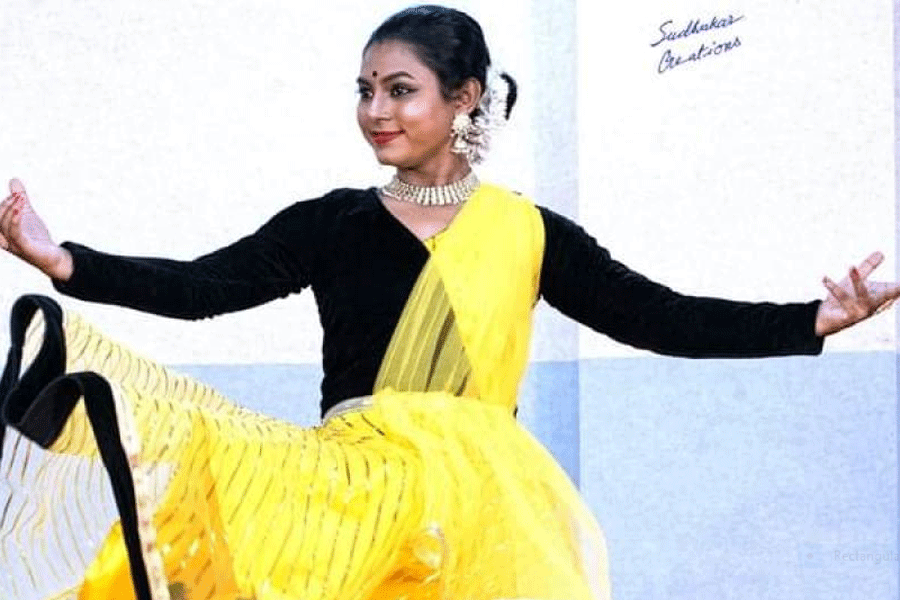Over 32 hours of non-stop dance. Over 1,600 classical dancers. One stage and one incredible attempt at setting a world record.
The feat was organised by Kolkata International Dance Festival in collaboration with Bharatiya Vidya Bhavan (BVB), that was also the venue.
In fact, the event that was in the pipeline for months had to overcome multiple obstacles, the first of which was venue. “All auditoriums have timings and no one was willing to give us space for 30 hours,” said Sandipan Mondal, secretary of the group.
Enter BVB. “We are best known for our school but we also have a culture and social service wing. One of our main objectives is to promote performing and visual arts. So when Sandipan approached me with his dream, we extended support,” said G.V. Subramaniam, director of Bharatiya Vidya Bhavan Calcutta and Agartala. “We provided the infrastructure- auditorium, audio-visual equipment, food and lodging for participants.”

Sourced by the Telegraph
Next was participants. While all 1,675-plus dancers jumped at the prospect of a world record, who among them would agree to dance in the dead of the night? “Some dancers came from different parts of the country — Delhi, Assam, Chhattisgarh... Then there were some from the districts and finally some from nearby areas,” said Sandipan. “We divided them into groups, giving convenient slots to those from far away. Thereafter we did lotteries.”
“My group Nrityam got to perform in the afternoon. But even if we got some unearthly time slot I’d never miss it. This is a rare opportunity,” said Shirin Anwar, a student of NUJS. The kathak dancer would practise her moves on the terrace of their hostel as students living under her room had started complaining.

Sourced by the Telegraph
Archisha Basu, a resident of New Town’s PS Ixora, was doubly excited to be at the venue. “This is my alma mater. I graduated from BVB a few months ago,” said the dancer who others were seeking directions from. “I would participate in dances while in school and am nostalgic to be back on this stage,” she smiled.
There were groups as well as individual dancers representing all eight classical forms of India. “While there was robust representation from Bharatanatyam, kathak, kuchipudi, odissi and mohiniyattam, there was a single kathakali dancer and a few Sattriya and Manipuri dancers too,” Sandipan shared. The inauguration also saw goudiya nritya, that is Bengal’s folk dance form.

Sourced by the Telegraph
The dancers clocked 32 hours 11 minutes and the organsiers have applied to the India Book of Records for their stamp. Once that comes they will apply to the Asia book and finally the Guinness World Records. “An official from India Book came to inspect the show but for a while. To scrutinise the rest of the show, they need uninterrupted footage. But there’s no video camera that has such a long memory. So we installed multiple CCTVs for the purpose,” said Sandipan.

Sourced by the Telegraph
There could also be no gap between the performances of two dancers. For that the music needed to be seamless. Again, no pen drive has enough space to play 30 hours of music. So two DJs — Aahi and ARV — sat by the stage and mixed the playlist. “We’ve never mixed classical music before and it was very different from the western fare we usually play. We sipped endless cups of coffee and downed numerous cans of Red Bull to stay up and though we were yawning by dawn, we felt a new lease of life once we crossed 27 hours, that was the previous world record for classical music,” said DJ Aahi.
The show was pulled off by a core team of 15 but Sandipan, who is a Bharatnatyam and Mayurbhanj chhou dancer himself, did not take part. “I was too busy with the management and had not slept for five nights before the show,” he said. “The purpose of this marathon was to build a community of dancers. This is something Bengal lacks. There were artistes who could not eat during the pandemic. If there was better networking within the fraternity, others could have helped out,” he said.
